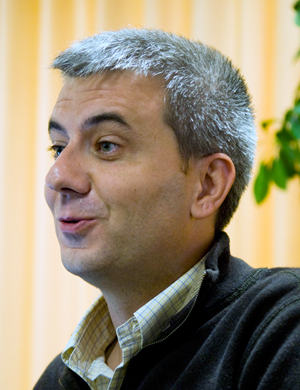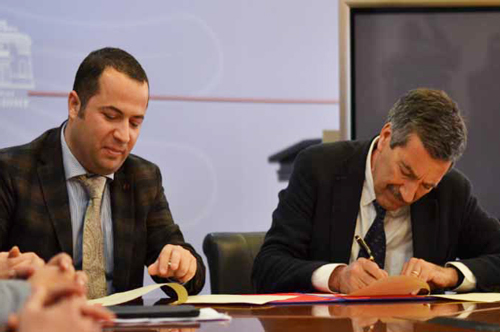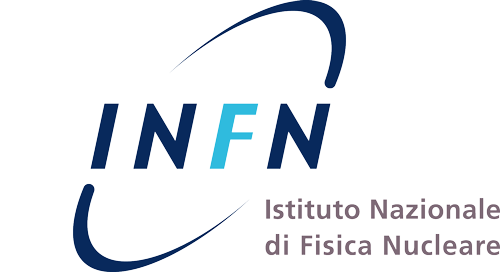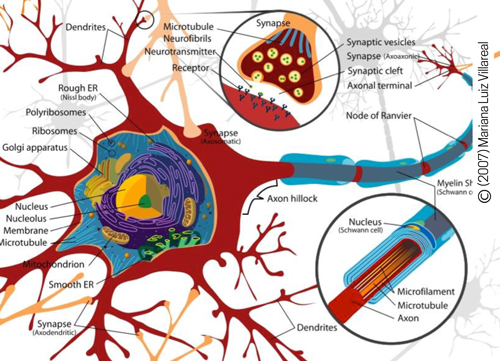PEOPLE

INNOVATIVE TECHNOLOGIES
TO HUNT
FOR DARK MATTER AT THE GRAN SASSO LABORATORIES
An interview with Cristian Galbiati, professor of physics at Princeton University and
co-ordinator of the DarkSide experiment.
The DarkSide experiment, installed in 2011 at the Gran Sasso National Laboratories, has just presented the first results on the effectiveness of an innovative technology for the detection of dark matter, which makes use of argon extracted from underground deposits. We interviewed Cristian Galbiati, coordinator of the international collaboration.
The INFN’s Gran Sasso National Laboratories, protected by 1400 metres of mountain rock that shields them from cosmic rays, are currently conducting various experiments to identify dark matter. Other projects are being conducted in various laboratories around the world. What is the difference in these experiments?
The purpose of the detectors currently used for the direct identification of dark matter is to detect the collisions of dark matter particles with the nuclei of the material used as a target mass or, in a few, limited cases, collisions with the electrons.
Of the various different technologies used, bolometric detectors using pure crystals as the target mass stand out for their low detection threshold; however, the very demanding and expensive techniques needed to build and qualify these detectors make building large detectors with this technique unattractive.
...
NEWS

Research
FROM THE AMS EXPERIMENT, ON THE ISS: NEW EXCESS OF ANTIMATTER IN COSMIC RAYS
There is new evidence of an excess of antimatter particles within the cosmic ray flux. The data were obtained by the Alpha Magnetic Spectrometer (AMS), also known as the Hubble, mounted on the International Space Station (ISS) in 2011 to study the physics of elementary particles. ...

International Collaboration
ENVIRONMENTAL RADIOACTIVITY: AGREEMENT BETWEEN THE INFN AND THE ALBANIAN ENVIRONMENTAL AGENCY
The development of nuclear research and technology to monitor environmental radioactivity. This is the subject of the agreement signed on 9 April in Tirana by the Italian Institute of Nuclear Physics (INFN) and the Albanian Environmental Agency (Agjencia Kombetare e Mjedisit, AKM). The Memorandum of Understanding (MoU) was signed ...

Nomination
EUROPEAN RESEARCH COUNCIL: INFN RESEARCHERS AWARDED TWO GRANTS FOR STUDIES ON PROTONS
The European Research Council (ERC) has awarded two of its Consolidator Grants to two researchers at the Italian Institute for Nuclear Physics (INFN). The grants, designed to support excellent European research teams, have been awarded to Piero Giubilato, researcher at the Padua division of the INFN and Padua University, and Alessandro Bacchetta, from the INFN’s division in Pavia and University of Pavia. ...


 SUPERCOMPUTERS:
SUPERCOMPUTERS: